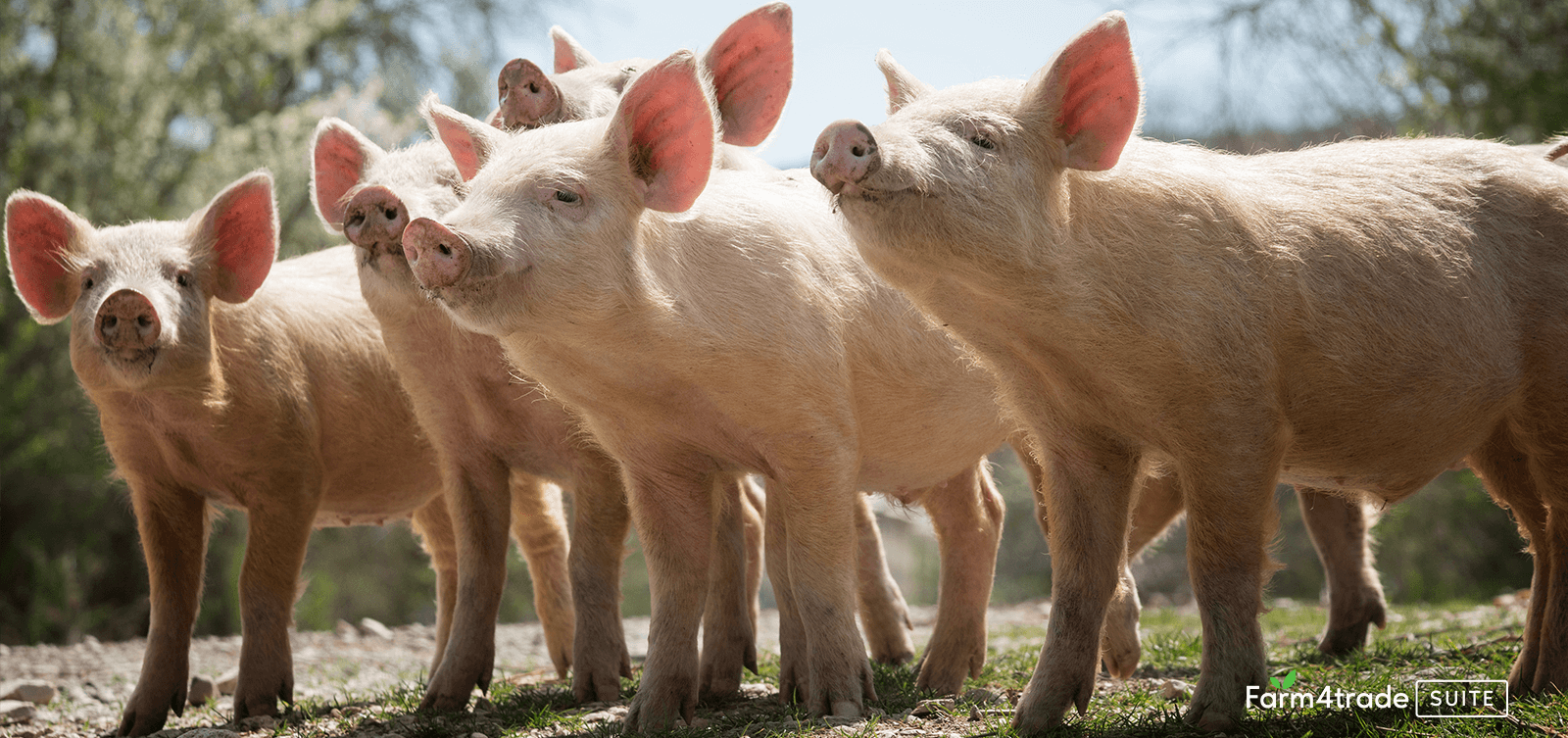23
Senior Five Pig production PIG PRODUCTION Terms used Sow; This is a female pig, which has already farrowed Boar; It’s …
Senior Five Pig production
PIG PRODUCTION Terms used Sow; This is a female pig, which has already farrowed Boar; It’s a male mature pig. Gilt; A young female pig, which has not yet farrowed. Piglet The young of a pig [newly born pigs] Farrowing; The act of giving birth in pigs. Runt; The last born among piglets. Farrowing pen; This is a special place where pigs farrow from Pigsty; This is a house where pigs stay Pork; Fresh meat from pigs Bacon; This is meat taken from sides and back of the pig and cured in the factory. SYSTEMS OF PIG REARING Intensive system; This is where the pigs are confined in houses through out their life Semi-intensive system; This is where the pigs are confined in houses at most period of the day and allowed out for a short time Extensive system; Pigs are allowed roam the place in search for water and feeds Question; explain the merits and demerits of each system Advantages of rearing pigs compared to other animals- Pigs require a small area since they can be confined under the intensive system of management and do not require a large area of grazing as ruminants do.
- Little initial capital is required as compared to dairying and fish farming.
- They consume most of the food remains reducing wastage of feeds on the farm and lowering feed costs.
- Pigs grow very fast which enables the farmer to get income in a short time when sold.
- It is adapted to specialized and diversified farming system
- They produce high quality manure which can be used in the gardens.
- Pig rearing creates extra employment for the family and the population especially in places with established pig industries.
- Pigs produce hard fat that can be used in the manufacture of soap.
- Pork is easily marketable
- Pigs are highly prolific which increases profits faster
- Diseases serious diseases like swine fever / hog cholera has caused serious losses to farmers in the pig industry.
- Pigs are non ruminant hence complete with man for the little food available.
- Social beliefs. A number of societies in Uganda look down at a pig as a an unclean animal therefore they cannot rare or eat products from the animal.
- Have a vice of uprooting plants and destroying farm structures which makes their raring expensive.
- Pig production requires a special kind of fence which may be expensive for most farmers.
- Inadequate organized market. Most of the pork / pig butchers are located in restricted places which makes marketing difficult.
- Poor breeds of pigs. Most of the breeds being kept are of poor quality and hence they are of low production.
- Poor management Most of the farmers have little knowledge about pig management. This reduces growth rates hence a low level of production.
- Large black
- Large white / Yorkshire
- Land race
- Saddle back.
- Boars
- It should be vigorous and healthy
- It should have well developed feet
- It should be free from defects that can be transmitted to off springs.
- Should have a long, deep and strong body.
- It should be easy to handle i.e. should have good temperament.
- They should be able to weigh about 100kg at six months of age.
- The appearance and condition of the pig /boar should confirm the breed type.
- It should be able to mature sexually early.
- It should be able to produce large quantities of viable sperm
- GILT /SOW
- Should have well developed feet to enable her feed the litter even when standing.
- It should have god mothering quality i.e. a low temperament.
- It should be healthy and having a vigorous build
- The appearance should be in conformity with the breed
- It should have at least 12 functional teats to enable her raise a large number of litter.
- It should be able to farrow without any problem
- Should have a high ability to utilize feeds efficiently.
- Should be able to produce at least 8 piglets per farrow
- Should produce piglets with a high growth rate.
- Feeding the sow or gilt should be given a feeds/ sow and weaner meal which are 2% of its weight per day.
- Individual feeding troughs should be encouraged to reduce competition between the pregnant animals.
- In the 1st month of pregnancy give about 2.4 – 3.5 kg of sow and weaner meal per day.
- Do not over feed the animal during pregnancy to avoid over feeding and stocking of the udder which causes mastitis.
- During the second and 3rd month sow and weaner feeds should be reduced to about 1.5 per saw per day.
- Bulky feeds like sweet potatoes and cassava should be given to make a balanced diet and improve digestion.
- Clean fresh water must be made available at all times which can be mixed with feeds or given after eating.
- The pregnant animal should be dewormed before farrowing to control internal worms e.g. tape worm.
- Minerals and vitamins should be given in correct amounts e.g. some vitamins which are important in embryo development.
- A sow should be taken in a clean farrowing pen two weeks to farrowing.
- Supply 10-15kgs of dry grass to the farrowing pen which can be used by a pregnant animal uses a nest.
- Administer an iron injection to the pregnant animal to control anemia in the piglets about to be born.
- The gilt also should be washed especially the udder with clean water and soap a few minutes to farrowing to remove dirt and worm eggs.
- The sow/ gilt becomes restless
- Presence of milk with in teats 12 – 24 hrs before farrowing
- Enlarged teats of the gilt or sow
- The vulva becomes swollen and enlarged.
- Muscles on either side of the tail slacken
- The sow prepares a nest from the dry grass.
- Arching of the sow’s back.
- Clean and disinfect the farrowing pen
- Wash and disinfect the pregnant animal
- Treat the animal against internal parasites
- Move the animal to the farrowing pen
- Secure the animals feed a day before farrowing
- Provide heat in the farrowing creep area
- Provide clean beddings
- Piglets should be left with the mother to ensure that they take colostrum which is important to their bodies.
- They should be provided with feeds rich in proteins and carbohydrates [creep feed] in a special place only accessible by piglets [creep]
- Clean water should be provided to the piglets at all times.
- Feed the gilt on At least 3kg of sow and weaner meal every day
- Provide clean water without any restriction
- Vaccinate the gilts against killer disease regularly
- Control external parasites like lice by spraying or washing using pesticides
- Sick gilts should be treated immediately o avoid loss
- The gilt should be mated at about 12 month after attaining 45 kg.
- Flush the animal 3-4 weeks before mating to increase rate of ovulation and successful fertilization
- Keep the pen clean to reduce disease out breaks by regular washing
- Once ready, the gilt should be taken to the boar and left there for 12 hours
- Observe the gilt to ensure that it has conceived if not, take it back for service
- Steaming up should be done 1 month to farrowing
- Wash the gilt prior to calving to remove worm eggs from the teats
- Ad-lib
- Semi adlib feeding
- Restricted feeding
- Improve functioning of the digestive system
- They are the cheapest source of animal feeds
- They are a good source of minerals and vitamins for grazing animals
- They easily satisfy the animal’s appetite since they are abundant and taken in large quantities.
- They protect and restore fertility in the soil.



